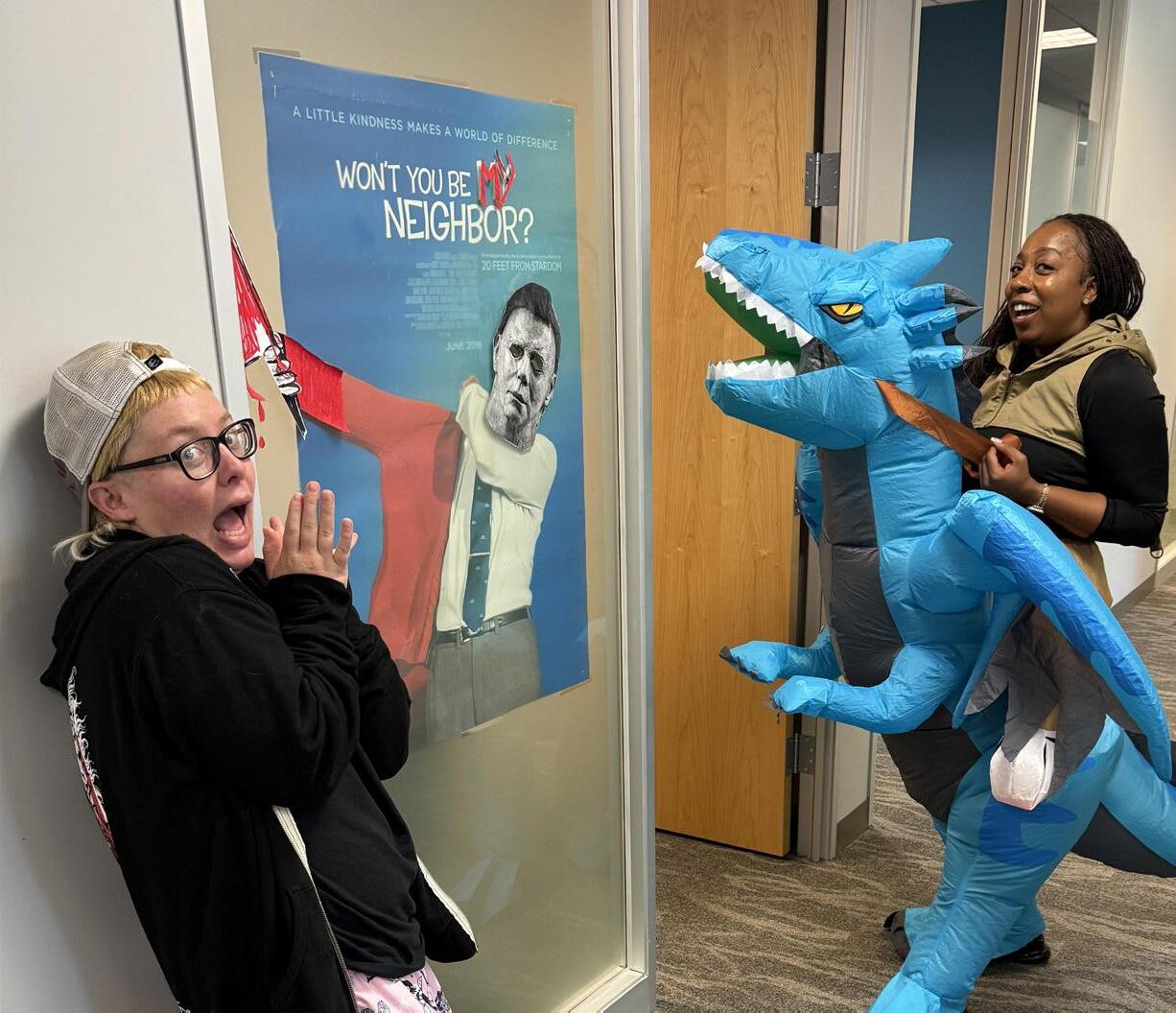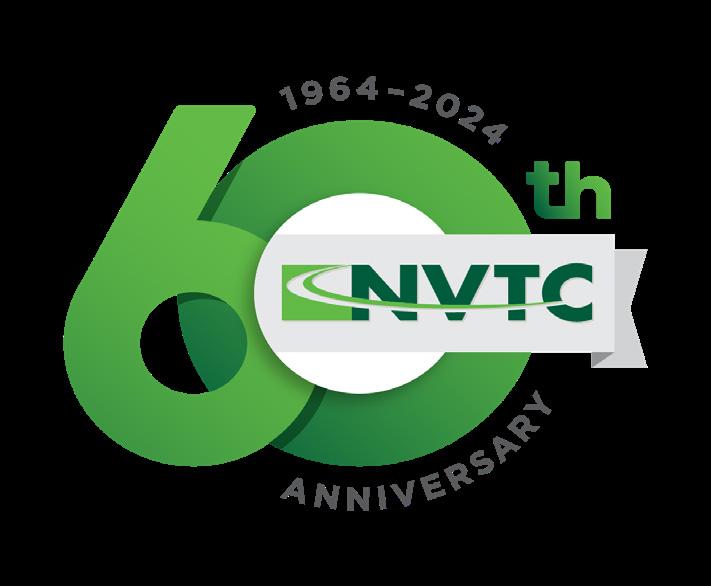


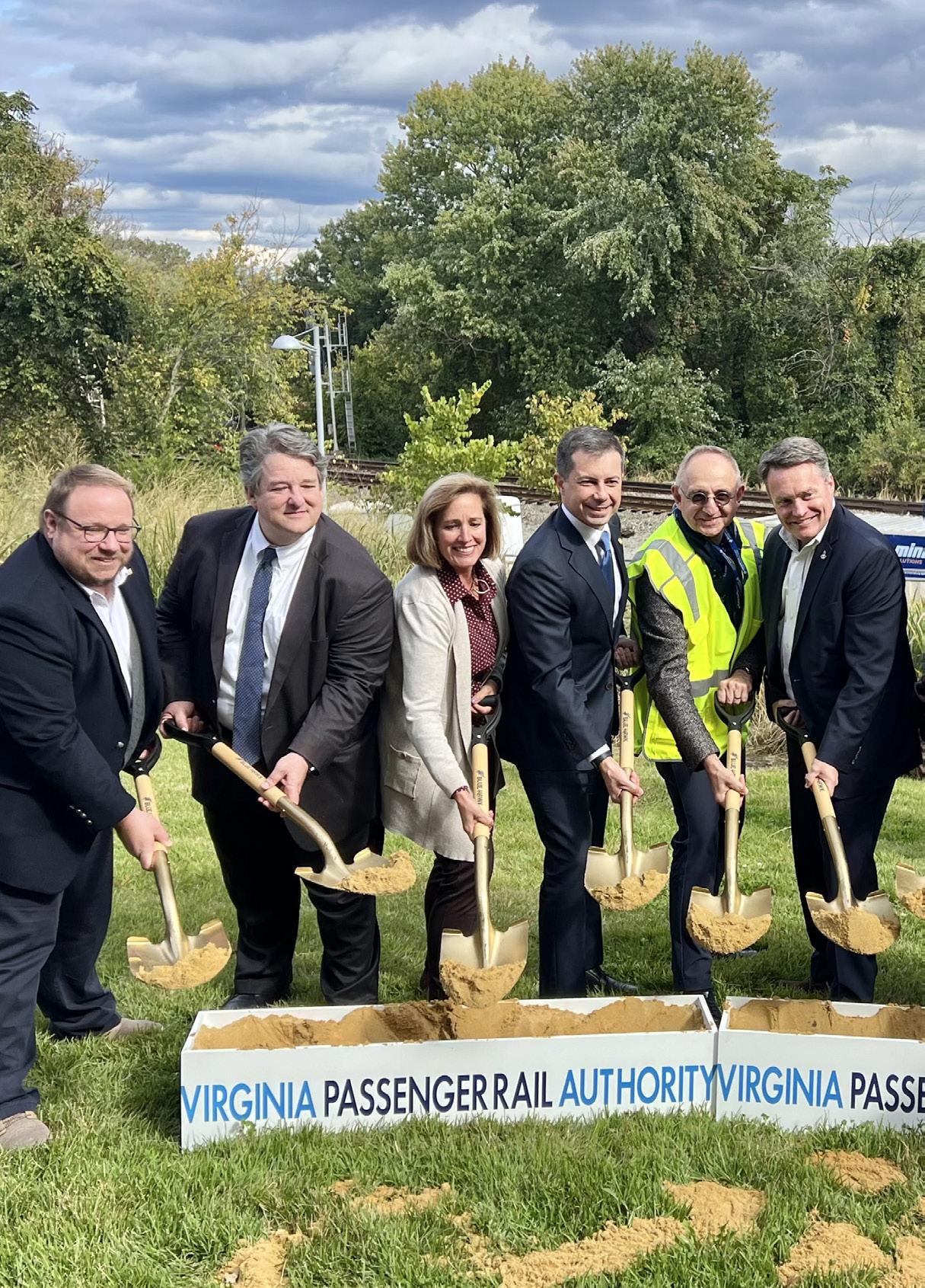







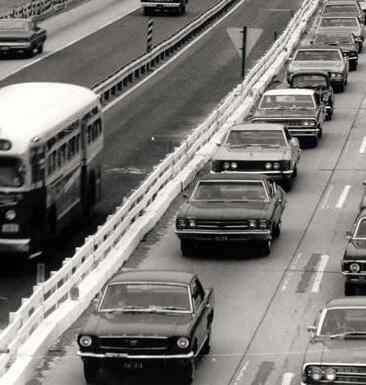

















Throughout 2024 we’ve celebrated the 60th anniversary of NVTC’s founding and told the stories of our decades of accomplishments. One of our signature successes was founding Virginia Railway Express (VRE). The idea of a commuter rail line using existing tracks had been discussed for years but became formalized in a 1984 feasibility study. Just eight years later, service started on two routes known as the Fredericksburg and Manassas Lines, with NVTC as a co-owner of VRE. VRE was created in a time of regular commuting patterns and the service reflected that need: bringing commuters to key Northern Virginia and District of Columbia destinations.
As population and traffic congestion along the I-95 corridor increased, it became apparent that expanding passenger rail could give commuters and other travelers an alternative. Five years ago, Gov. Ralph Northam unveiled Transforming Rail in Virginia, an ambitious effort to expand rail capacity in the Commonwealth. Among its proposals, building a new Long Bridge connecting Virginia and the District. The existing bridge carries VRE and Amtrak trains and is at 98% capacity. Fast forward to October 2024, when I helped celebrate the groundbreaking for the new bridge, an historic $2.3 billion project that will give passenger rail a dedicated track, unlocking the rail bottleneck over the Potomac and giving VRE flexibility to add new service.
At the same time, NVTC’s Commuter Choice program has given strategic awards to VRE to improve stations and parking availability, as well as developing a program that enables VRE passengers to ride Amtrak trains.
While construction on the bridge and other rail improvement projects gets underway, NTVC remains deeply involved in parallel efforts to establish long-term, dedicated funding for VRE and all the region’s public transit agencies. We envision the pairing of these infrastructure improvements and financial security measures to ensure the enduring success of VRE.
I’m cautiously optimistic for the future of VRE, but I also know a lot of hard work lies ahead to keep this generational investment moving forward.

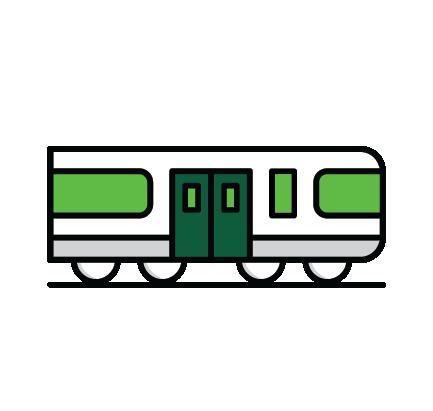


Executive Director






The General Assembly’s joint subcommittee established by SJ 28 to study the growing needs of public transit in Northern Virginia held its third of four 2024 meetings on October 17 at NVTC’s offices. The subcommittee received
briefings from NVTC staff on the connections between land use and transit ridership, cost comparisons between Northern Virginia and the rest of the Commonwealth, an overview of the 10 revenue sources analyzed in NVTC’s Metro Operating Funding and Reform Working Group Report and options for up to five additional revenue sources to study in calendar year 2025. The fourth and final subcommittee meeting will be held on November 12 at NVTC in the firstfloor conference room. The meetings are open to the public and will be livestreamed on NVTC’s YouTube channel.


Executive Director Kate Mattice joined U.S. Transportation Secretary Pete Buttigieg and many members of Virginia's Congressional delegation for the groundbreaking for the new Long Bridge on October 15. The passenger rail bridge over the Potomac River will uncork a major bottleneck and enable Virginia Railway Express (VRE) and Amtrak to run more trains.
The Virginia Passenger Rail Authority (VPRA) says the $2.3 billion project, which includes $729 million in federal funding, is the largest of the Commonwealth's Transforming Rail in Virginia effort. The new two-track railroad bridge will connect Arlington with the District, allowing for the expansion of rail service to meet future demand. The new bridge will be built next to the existing bridge, which is 119 years old and will allow for the separation of passenger and freight rail traffic. The bridge is scheduled for completion in 2030.

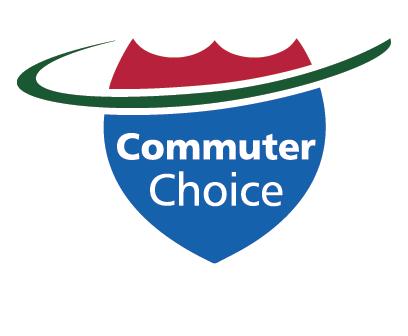

NVTC published the Commuter Choice annual report in October which found that projects funded by the program have supported over seven million trips in the I-395/95 and I-66 corridors since the program kicked off, with ridership reaching a record of 7,500 trips each weekday.
Through FY 2024, Commuter Choice had invested a total of $156 million on projects in the two corridors. Implementation is underway on an additional $22 million in I-66 Commuter Choice projects funded under the FY 20252026 Program of Projects.
Beyond these benefits, the report discusses how Commuter Choice projects support a prosperous, livable Northern Virginia by bolstering economic growth and resilience, providing new and expanded transit services throughout the two corridors that offer convenient and reliable travel, addressing public requests for additional travel options and reinvesting Northern Virginia-generated revenues in the region.
The Commission also authorized the opening
of the call for projects for I-395/95 Commuter Choice during their meeting last week. Looking further ahead, NVTC will study I-66 corridor travel needs and potential projects that Commuter Choice could support. The assessment will also consider how Commuter Choice could support transformative major capital improvements proposed, such as rail transit capacity expansions and bus rapid transit (BRT).
Sen. Mark Warner gestures as Virginia members of the U.S. House hold a check and Gov. Glenn Youngkin looks on.

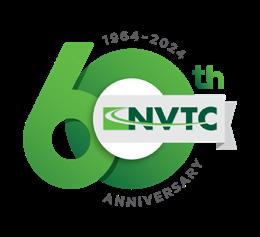


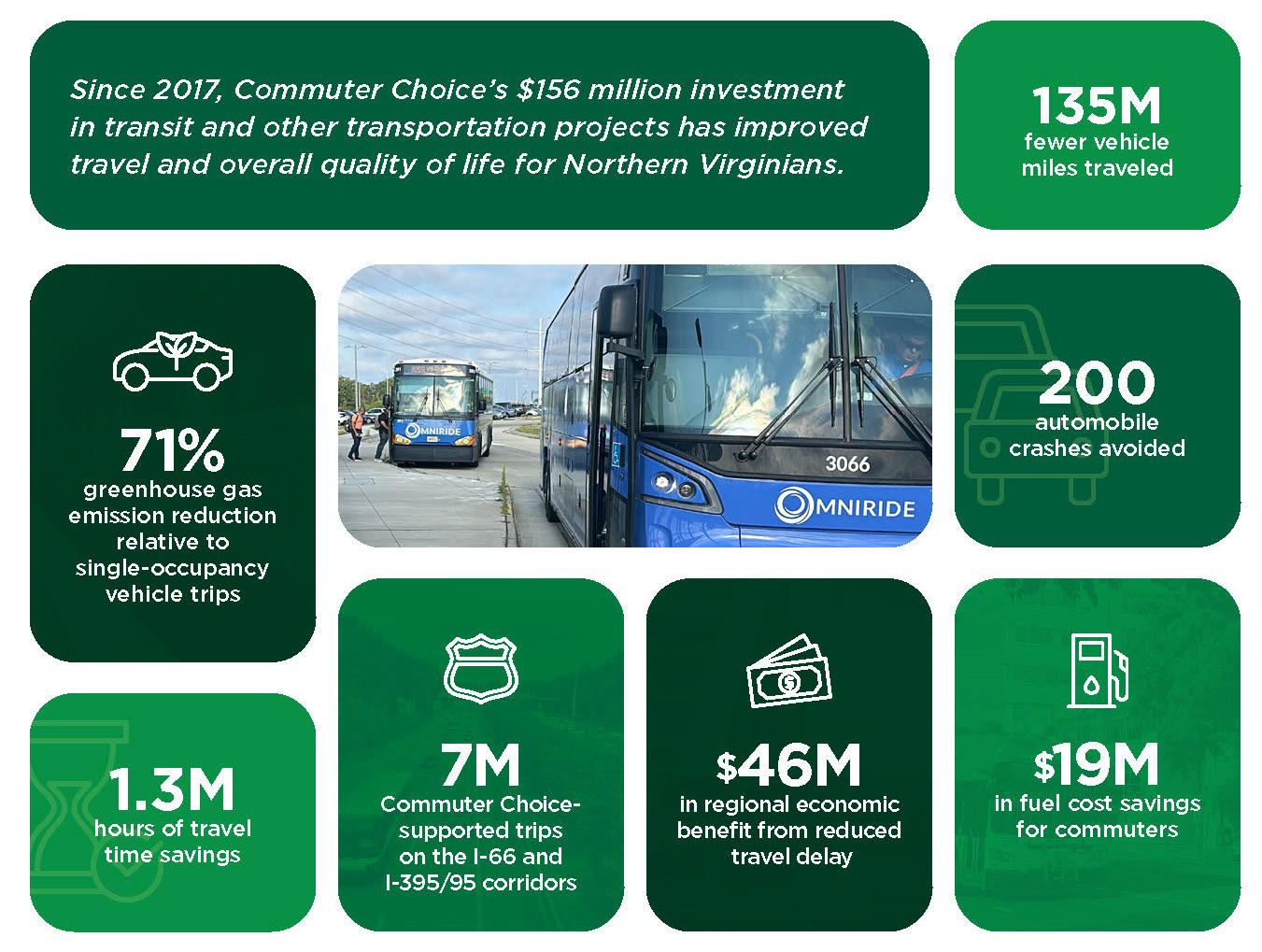





We said goodbye to two members of NVTC's staff on November 1. Allan Fye, Director of Programs and Policy, and Ben Owen, Senior Manager for our Commuter Choice program. Allan has been a vital member of our senior leadership team since he joined us in 2018, overseeing the evolution of our programs, while building a high-performing team to execute the Commission's vision. He also helped navigate NVTC's response to the COVID-19 pandemic and the transition back to the office once vaccines were widely available. Allan says he's grateful for the opportunity to advance public transit in Northern Virginia and we expect to cross paths again as he takes on a new role in federal transit policy at the Federal Transit Administration.
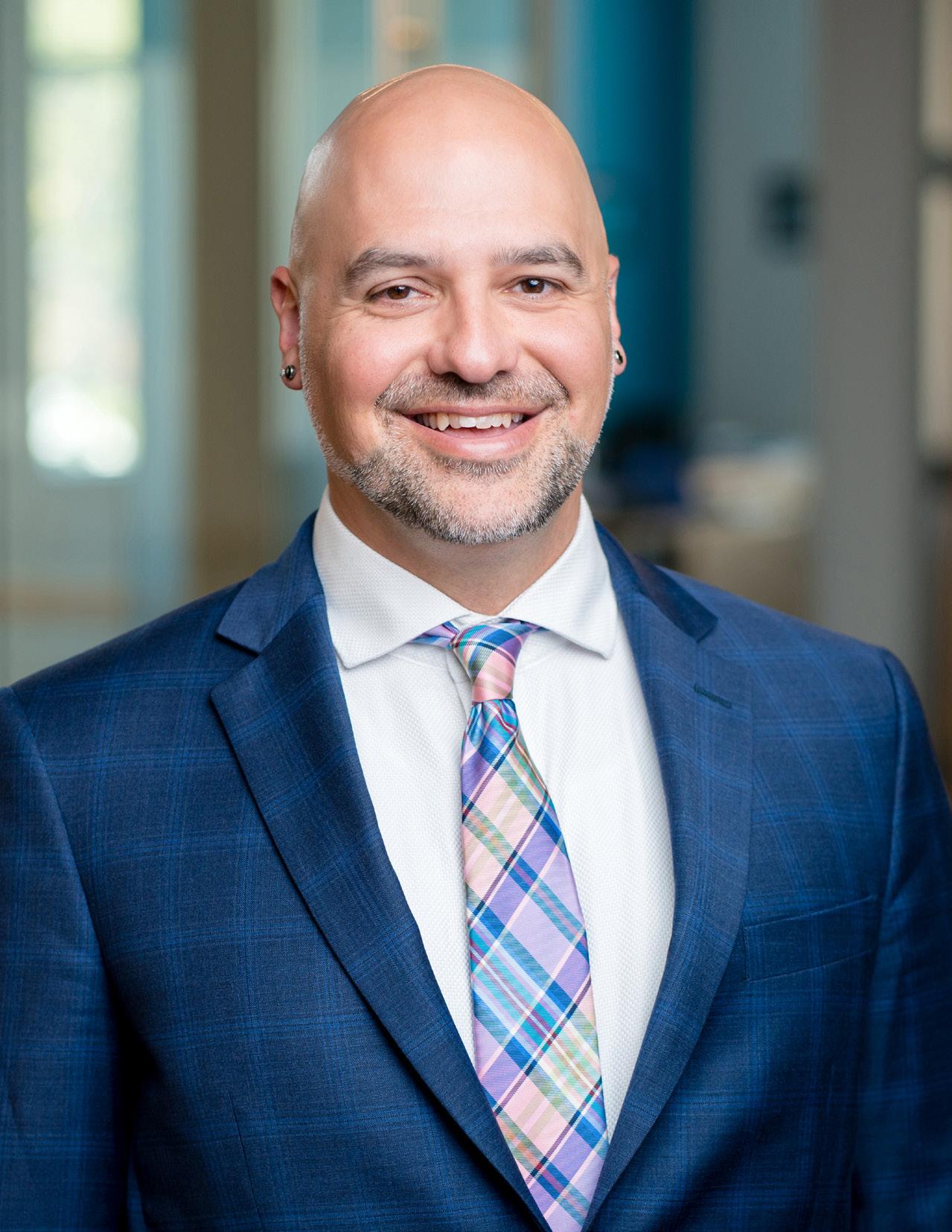
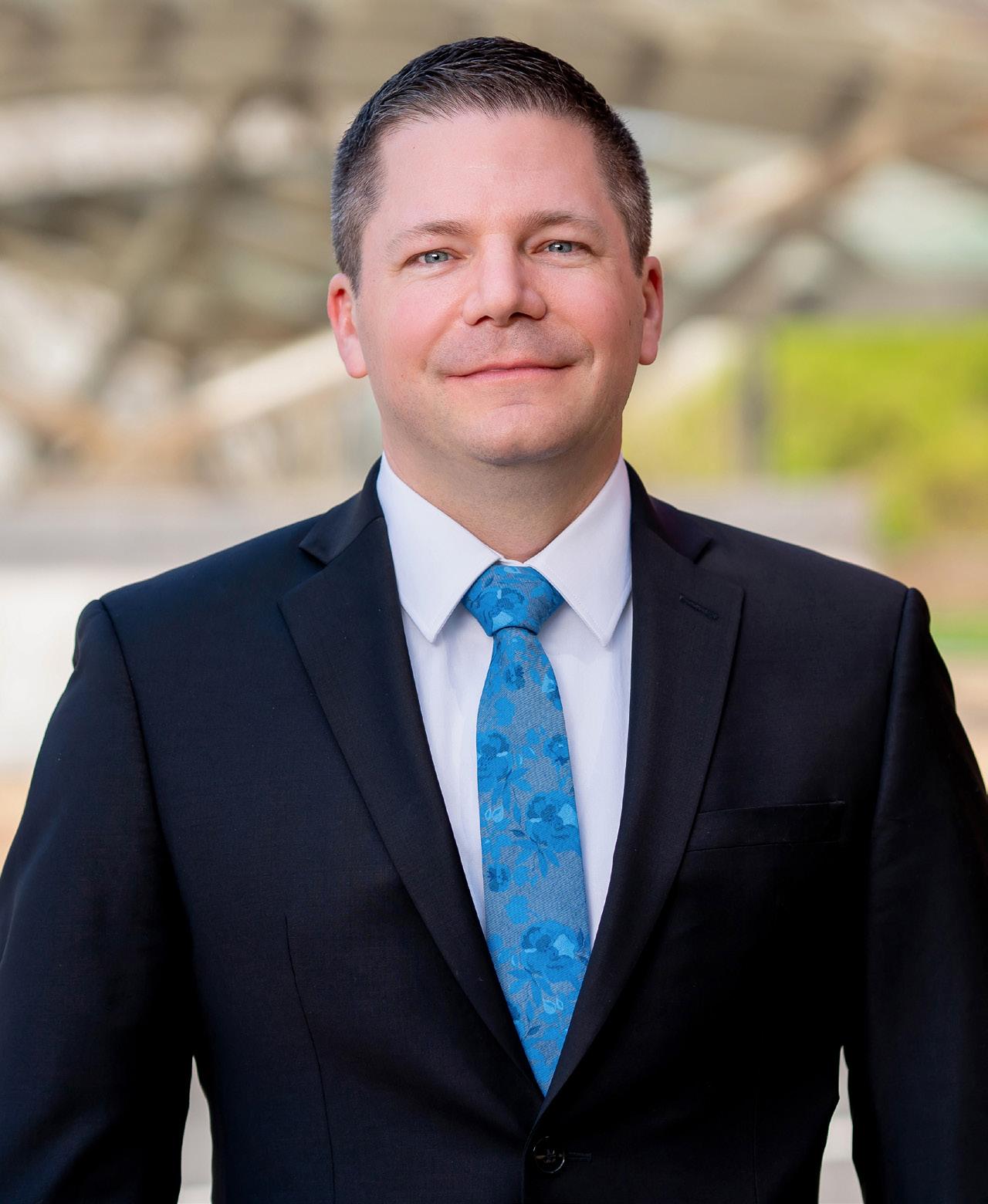
Allan Fye
Ben has been with us since 2019, overseeing the evolution of our critical Commuter Choice program, which uses toll money to support projects that reduce traffic congestion. His accomplishments include establishing a predictable program cycle for I-66 and I-395/95, regular engagement with the Commission and our committees and developing consistent policies for applicants. We'll also miss his friendliness and midwestern sense of humor.
Executive Director Kate Mattice also announce multiple promotions. Senior Program Manager Andrew D'huyvetter will take over as our new Director of Policy and Programs. Senior Program Analyst Daniel Knickelbein will take over as the new program manager for Commuter Choice and Senior Program Analyst Adam Hager will be our new program manager for our Metro program. Senior Program Analyst Sophie Spiliotopoulous has been elevated to program manager and will continue to work in the data and analysis space.
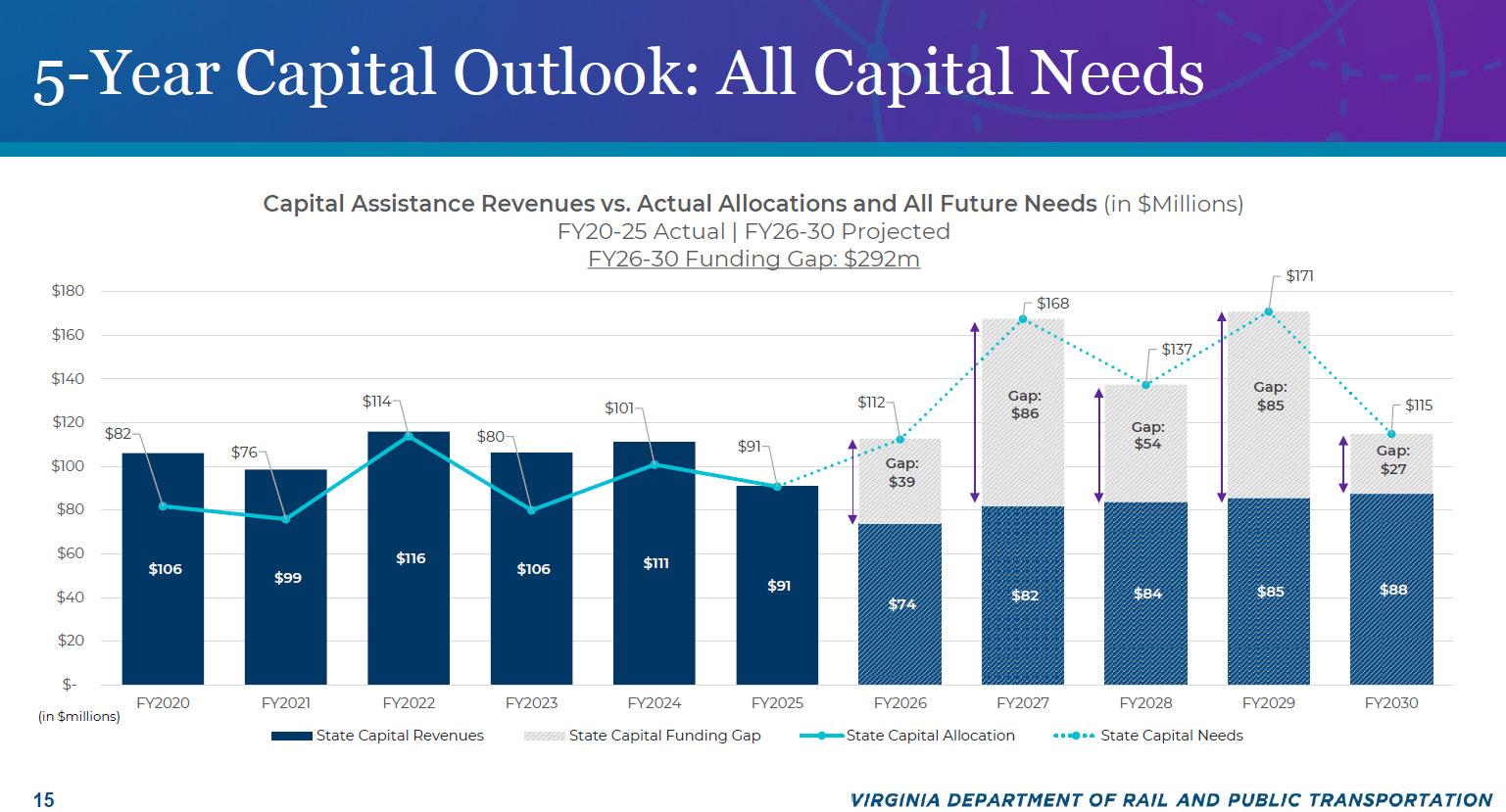
Executive Director Kate Mattice attended a meeting of the Transit Service Delivery Advisory Committee (TSDAC), of which Kate is a member, on October 8. The committee talked about the FY 2026 fiscal overview as it relates to public transit in Virginia. It reflects the exhaustion of pandemic-era relief funds and increased operating and capital costs. A presentation from the Department of Rail and Public Transportation showed that projected new operating revenues are not expected to keep pace with projected operating cost increases. Committee members discussed the possibility of moving existing money from other available sources, while Kate
noted that gap may need to be solved through legislation.
This projected cost growth does not include Metro or Virginia Railway Express. We continue to engage the Northern Virginia Growing Needs of Public Transit Joint Subcommittee and DMVMoves coalition on ways to create longterm, dedicated funding for those agencies.
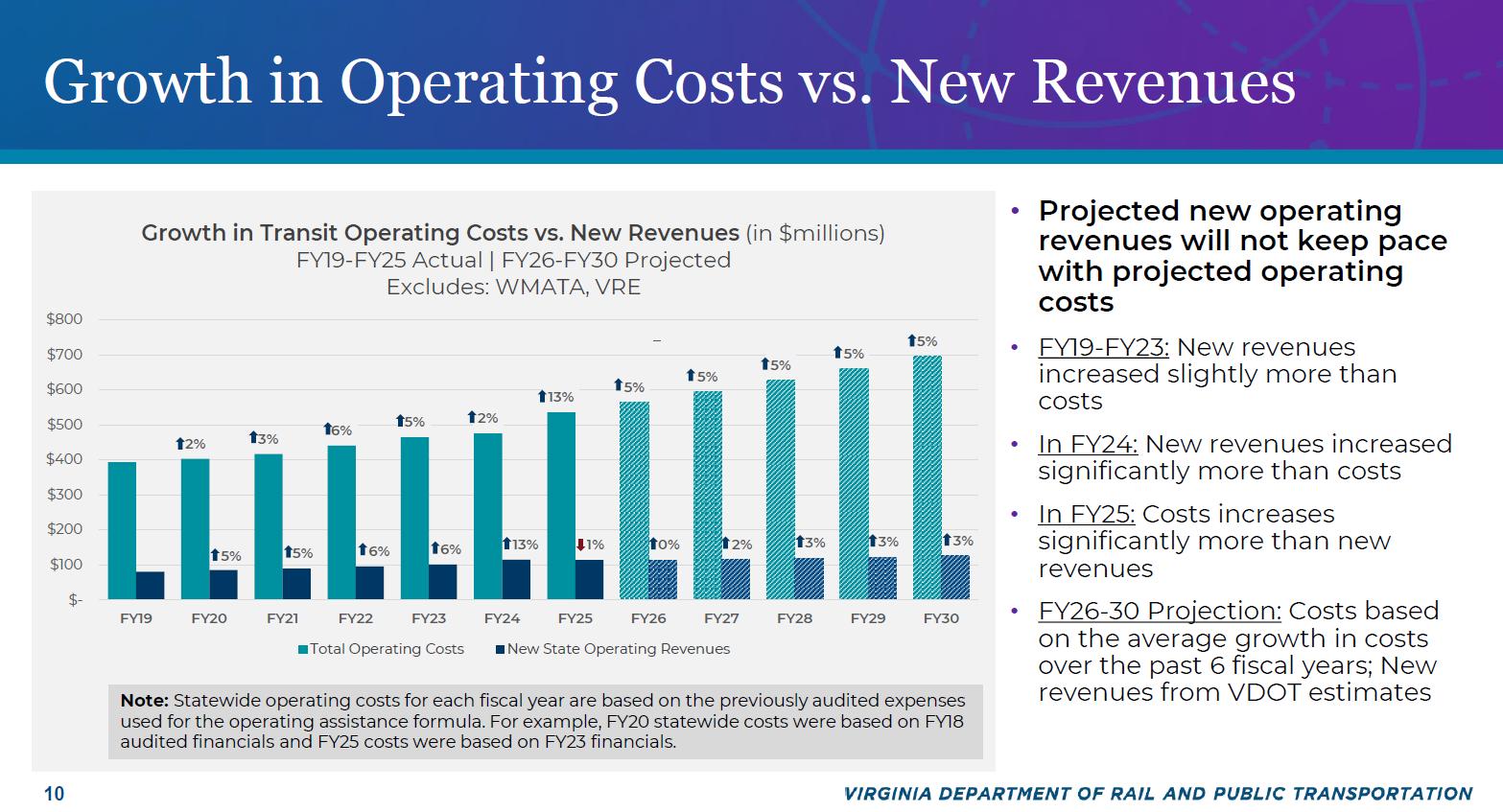


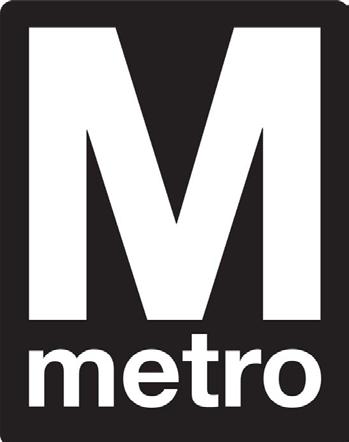
Metro's Board of Directors met October 24 and received staff briefings on the capital program and operating budget outlook. While Metro has made significant progress in addressing overdue state of good repair needs, reducing the state of good repair backlog from nearly $7 billion in FY 2016 to $4 billion in FY 2024, the agency faces a capital funding cliff as dedicated capital funding bond capacity is projected to be exhausted in FY 2028. Because several funding sources were not indexed to inflation, their value has eroded over time. Recent transfers of preventive maintenance expenses above historical averages and higher than historic levels of inflation have accelerated the exhaustion point of dedicated capital funding bond capacity where most of the funding will go to debt service payments. While the debt ceiling is anticipated to be reached in FY 2028, Metro is already operating in a fiscally constrained capital environment. If its capital funding deficit is not addressed, Metro will see its state of good repair backlog grow, declining reliability, a worse customer experience and increased safety risks.
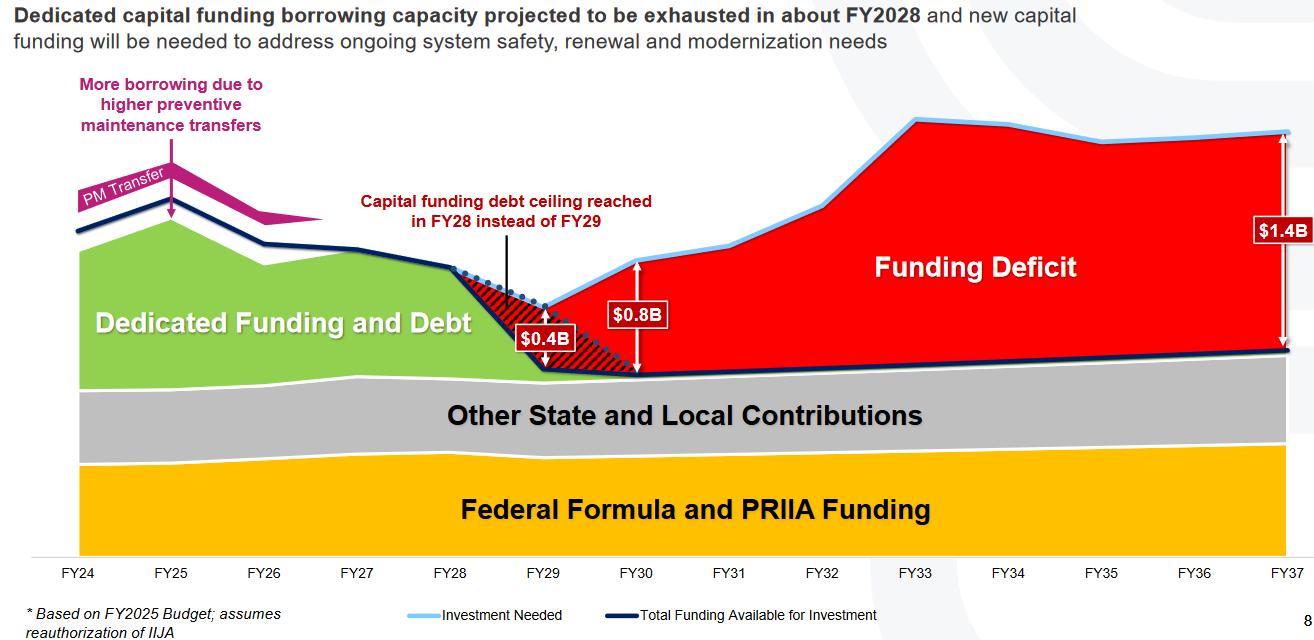
As an early step in the budget process, Metro also provided an overview to the Board


highlighting key inputs into its forthcoming operating budget. Metro faces a $217 million forecasted operating budget deficit in FY 2026, due largely to expiration of pandemic-era federal aid and less reliance on preventive maintenance expense transfers from the capital budget. As first projected in the FY 2025 budget process, Metro anticipates additional jurisdictional subsidy of $95 million, application of one-time savings from FY 2024 ($28 million) and $94 million in preventive maintenance transfers to close the $217 million gap.

Virginia’s share of the additional jurisdictional subsidies for FY 2026 was included in the Commonwealth’s Biennium Budget. However, beginning in FY 2027, no funding has been identified that would continue Virginia’s share – split between the Commonwealth and NVTC jurisdictions – of the additional regional investments necessary to keep Metro’s operating budget fully funded. Metro staff will present a detailed budget outlook in November before releasing its FY 2026 proposed budget in December, with approval expected in March.




Executive Director Kate Mattice and Director of Programs and Policy Allan Fye traveled to Anaheim, California to attend APTA TRANSform, the U.S. transit industry’s largest conference with
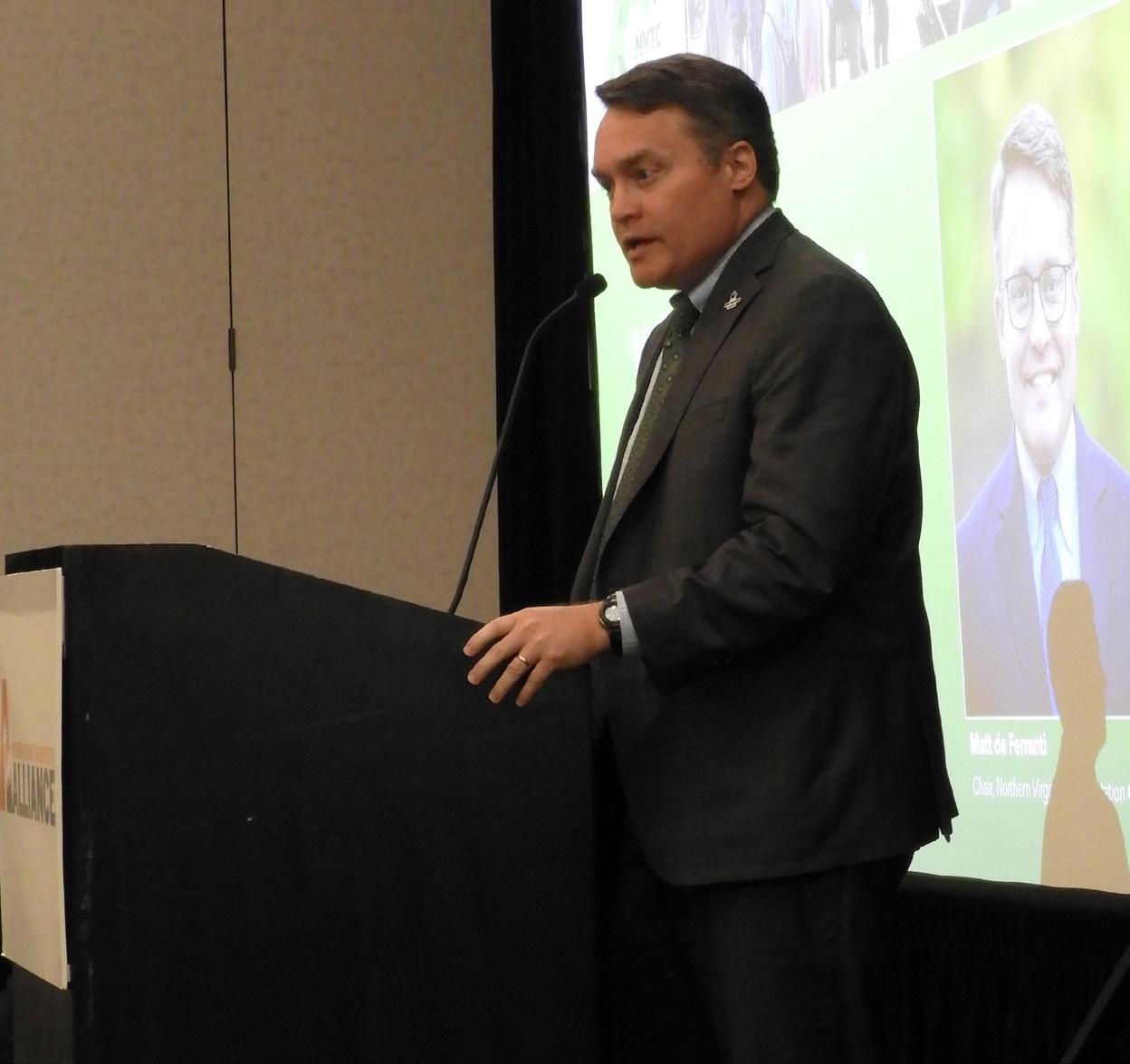


more than 3,000 attendees. Kate moderated a panel on multimodal corridors, a topic near and dear to NVTC’S hearts as our Commuter Choice program works to reinvest toll revenues into projects that move more people through our most congested corridors. Allan and Kate also engaged with APTA’s many technical and policy committees, learning the latest trends that will likely inform future federal transit legislation.
Chair Matt de Ferranti represented NVTC at the October What You Need to Know about Transportation breakfast, hosted by the Northern Virginia Transportation Alliance. Chair de Ferranti gave an overview of the region's transit network, highlighted rebounding transit ridership and new and improved bus service and discussed efforts to establish dedicated, sustainable long-term funding for transit through the SJ28 Growing Needs of Public Transit Joint Subcommittee and DMVMoves efforts.
Senior Program Manager Xavier Harmony and Senior Program Analyst Sophie Spiliotopoulos attended the Chesapeake and Potomac Section of the Institute of Transportation Engineers (CAPSITE) Annual Conference and Business Meeting where they presented initial findings from their study on integrating transit with bicycling and micromobility in Northern Virginia. This study uses regional plans, policies and data to explore how the region’s jurisdictions and transit agencies combine transit with bicycling and other micromobility. The final version of this work will be presented at a future Commission meeting.

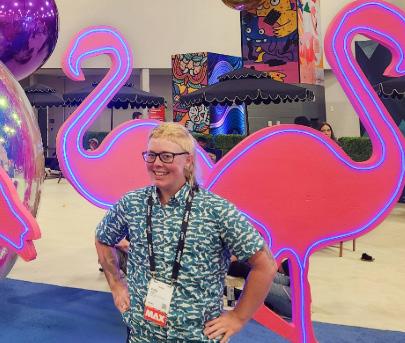
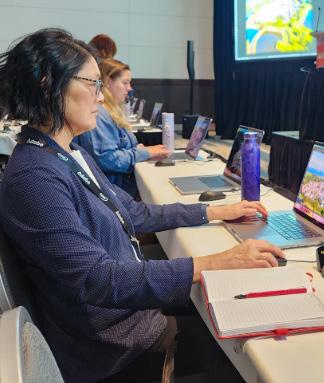
Communications Specialist Colie Touzel attended the Adobe MAX conference in Miami. Colie focused on enhancing their skills in Photoshop, Adobe Express and Lightroom, while learning new techniques in Indesign, Frame, Premiere Pro and After Effects. The conference offered deep insights into new tools, creative techniques and time-saving workflows. Colie is excited to apply these learnings to elevate NVTC projects!


Senior Program Managers Ann McGrane and Xavier Harmony presented at the Transportation Association of Greater Springfield (TAGS) meeting on October 19. Ann provided a recap of the "Value of Northern Virginia Transit" to the Commonwealth" study, while Xavier shared the findings from his "Climate Benefits of Transit" in Northern Virginia study.
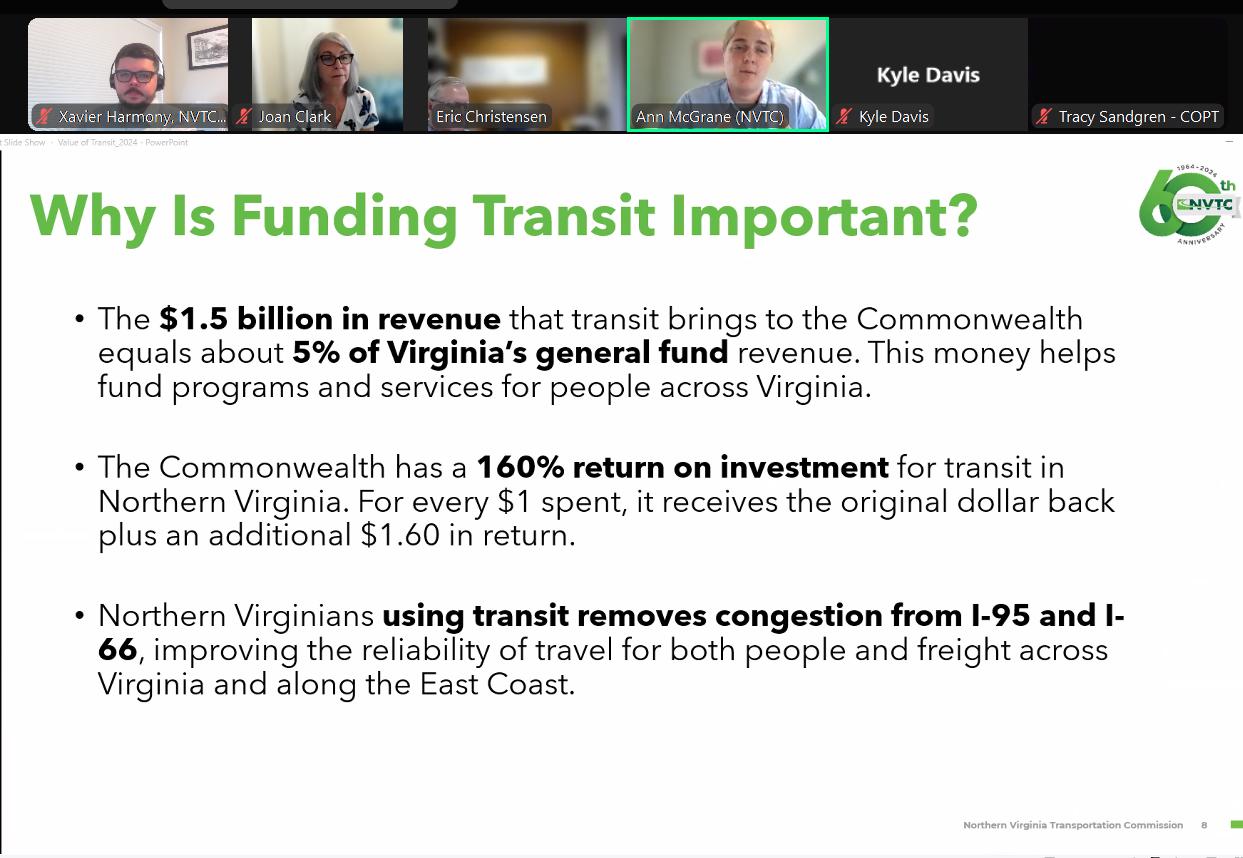



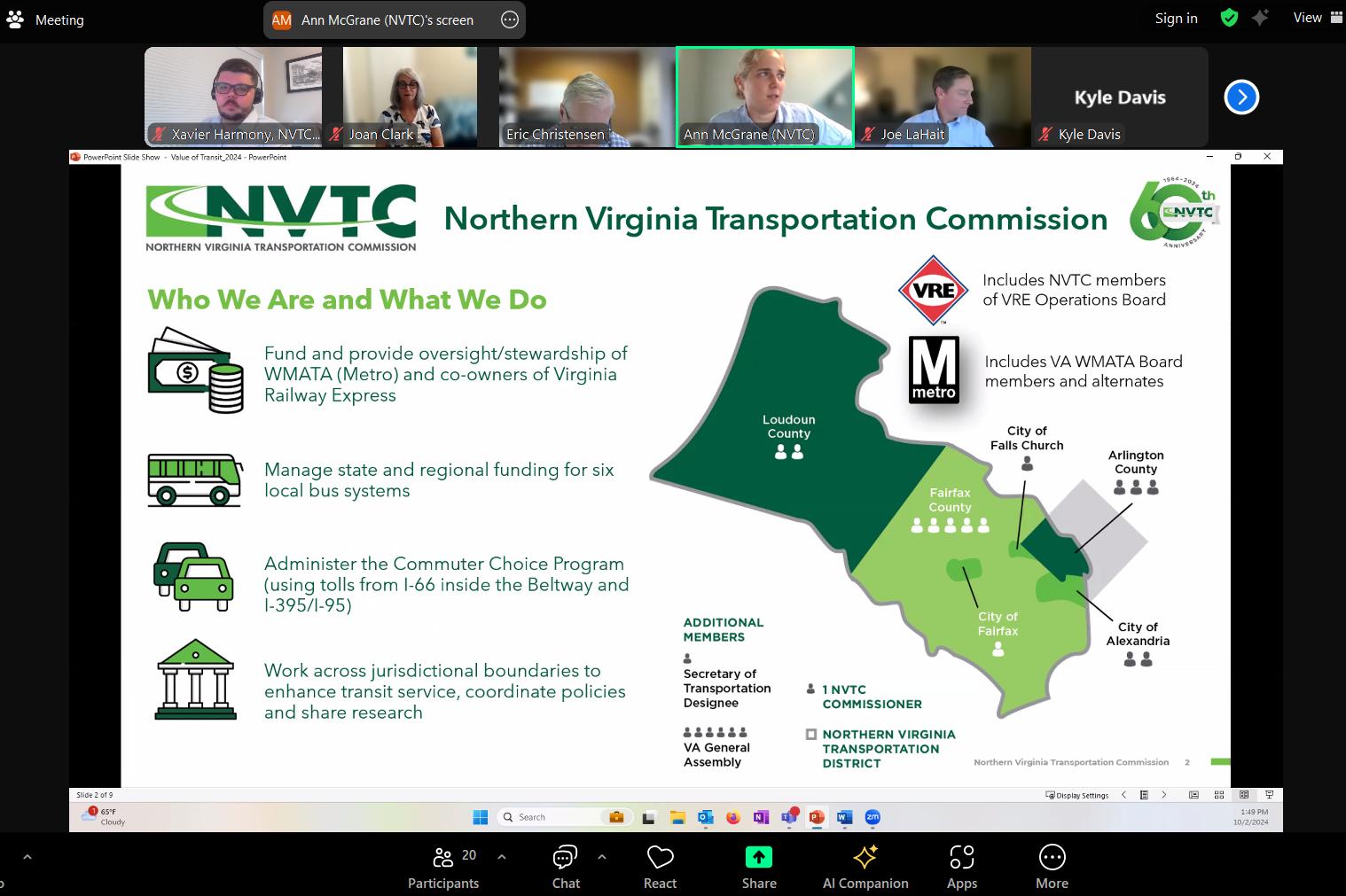



The Commission honored Mary Hynes for her long record of public service and dedication to improving transportation in Virginia at their October meeting. Hynes served on the Commission, the Arlington Board, the Metro Board, the Northern Virginia Transportation Authority and the Commonwealth Transportation Board. The Commission's resolution called Ms. Hynes' "a strong champion for public transit."
Executive Director Kate Mattice attended the Mpact Transit + Community conference in Philadelphia (you may remember it's former name Rail-Volution). It's a workshop-intensive event focused on improving transit-oriented communities.
As part of the conference, Kate went behind the scenes with SEPTA professionals to learn about their vision for more frequent rail service, investing in more accessible vehicles and reimagining wayfinding. There was a lot of information to bring home to our own public transit network.




We celebrated Halloween with a lunchtime pizza party and costume contest. Congratulations to Monique Blyther for winning best costume and Colie Touzel for winning best office door decoration.





